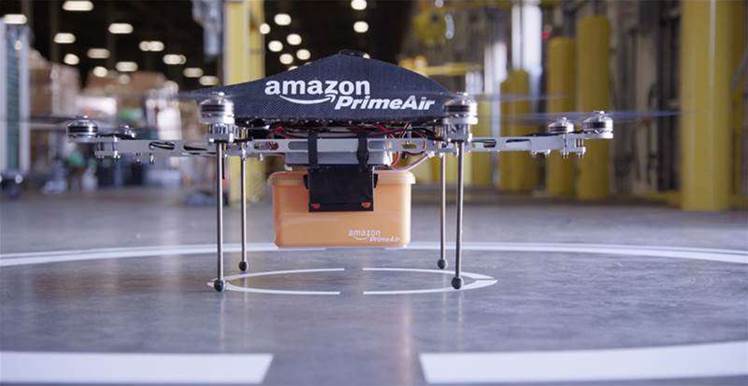Amazon has blasted US federal regulators for being slow to approve commercial drone testing, saying the United States is falling behind other countries in the potentially lucrative area of unmanned aviation technology.

Less than a week after the Federal Aviation Administration gave Amazon the green light to test a delivery drone outdoors, the company told US lawmakers that its prototype had already become obsolete while the company waited more than six months for the agency's permission.
"We don't test it anymore. We've moved on to more advanced designs that we already are testing abroad," Paul Misener, Amazon's vice president for global public policy, said before the US Senate subcommittee on aviation operations, safety and security.
"Nowhere outside of the United States have we been required to wait more than one or two months to begin testing."
The Amazon case illustrates the frustrations of many industry representatives, who say the US regulatory process is not keeping up with rapidly developing drone technology that could generate new revenues and cost savings for a range of industries.
Ahead of toay's hearing, the FAA sought to alleviate some of that frustration by announcing a new "blanket" approval that allows companies with exemptions from a US ban on commercial drone use to fly limited operations without seeking new approval for each project.
The change affects only flights of up to 61 metres during daylight hours and within a drone operator's line of sight.
Amazon wants to use drones to deliver packages to its customers over distances of 16 km or more, which would require drones to travel autonomously while equipped with technology to avoid collisions with other aircraft.
Misener said European and other international authorities have more "reasonable" approaches that recognise the potential economic benefits of commercial drone operations.
"This low level of government attention and slow pace are inadequate, especially compared to the regulatory efforts in other countries," Misener said, calling on regulators to begin planning now for drone systems capable of autonomous travel.
Margaret Gilligan, FAA's associate administrator for aviation safety, defended the pace of FAA drone actions on safety grounds, saying US airspace is more complex and more heavily traveled than that of other countries.
She told the Senate panel that regulators could set new standards for autonomous drone operations within a year.
The FAA recently proposed rules that would lift the current ban on most commercial drone flights, but several restrictions attached would make package delivery and other business applications unfeasible.
Among other constraints, the proposed rules would limit commercial drones to an altitude of 150 metres, allow flights only during daytime and require operators to keep the aircraft in sight at all times.
The agency does not expect to finalise the rules until late 2016 or early 2017, according to government officials. During this period, the current ban will stay in place; companies can apply for exemptions to use drones for specific business applications.
Gilligan said the FAA has granted more than 60 exemptions out of several hundred requests.
Meanwhile, Australia, Canada, France and the United Kingdom have progressed toward airspace integration and allow for commercial use, the Government Accountability Office (GAO) said in a report to the subcommittee.
Australia has granted operating certificates to 185 businesses, while several European countries have granted licenses to more than 1000 operators, according to the report.
Australian civil aviation officials are currently developing a new unmanned aerial system regulation that would allow operators to request a certificate allowing beyond line-of-sight operations.
Use would be limited and allowed only on a case-by-case basis, however.



.png&h=140&w=231&c=1&s=0)

_(22).jpg&h=140&w=231&c=1&s=0)



_(26).jpg&w=100&c=1&s=0)

 iTnews Executive Retreat - Security Leaders Edition
iTnews Executive Retreat - Security Leaders Edition










_(1).jpg&h=140&w=231&c=1&s=0)



